Drone laws and regulations have become confusing in many parts of the world and Iceland is no exception to that. There is also a lot of really outdated information out there. However, as of January 1st 2024, new regulations on unmanned aircraft (drones) have been implemented in the EU and those same regulations are now also in effect in Iceland (as of December 5th 2024). Nevertheless, there are a bunch of local regulations you need to be aware of. In this blog, I focus on the regulations which apply to consumer/prosumer photographers & videographers who want to fly their drone in Iceland.
UPDATE 04/12/2024: As of today, all of the rules stipulated in this blog are in effect.
UPDATE 15/07/2024: For recreational drone flying in Vatnajökull National Park, a drone permit is no longer required. Commercial drone flying still requires a permit.
Disclaimer: While I have done & will do my best to keep this article with rules and regulations up-to-date, information may change in the future. Always make sure to check the accompanied links too if you are unsure about something!
Special thanks to Shari Asselberghs for the cover image of this blog.

Drone photography can add an exceptional value to your photography portfolio, especially in the Icelandic Highlands.

Some of my most compelling work has been taken using a drone, while flying above the various volcanic eruptions in Iceland during recent years.
Drone Laws & Regulations In Iceland
In Iceland, the European drone regulations are now also implemented. This means that everywhere in Iceland the same laws will apply as in the European Union. So what does this mean?
- If you are licensed within the EU, your drone license will cover flying in Iceland as well and you should already be aware of these rules.
- If you are not licensed yet, you can find the materials and take the basic A1/A3 exam online via the Icelandic Transport Authority’s drone website. Registration is valid for 5 years and will set you back a small fee. More information can be found on island.is.
There are, of course, also local regulations which apply in specific areas such as national parks and protected nature reserves, which I will delve into further into this article.
Which Drone Categories Are There Within The Regulations?
There are essentially two categories of drones according to the law: the Open and the Specific category. The Open category involves all low-risk drone operations involving drones below 25 kilograms, which is what all consumer and prosumer drone users fall under. Most drone photographers and videographers use C0, C1 or C2 classified drones, which are all below one kilogram.
The specific requirements to be in the Open category are:
- The drone must weigh less than 25 kilograms.
- The drone pilot needs to maintain a visual line of sight (VLOS) with the drone at all times.
- You can not fly higher than 120 metres above the ground (not above the take off point).
- You can not fly over crowds of people.
- Dangerous goods can not be flown with them.
- You are not allowed to release objects from the drone.
- The drone must be marked with the registration number of the drone operator.

Drone rules and regulations can be quite confusing, especially when comparing different countries and even regions.
Which Subcategories Exist In The Open Category?
The Open category is divided into three subcategories: A1, A2 and A3. These categories are separated as follows:
- Subcategory A1: Fly light drones (up to 900 grams) with few distance restrictions to uninvolved people.
- Subcategory A2: Fly drones in built-up areas with a minimum of 50 metres from uninvolved people (30 metres with a C2 class drone).
- Subcategory A3: Fly drones up to 25 kilograms with a minimum of 150 metres from residential, commercial, industrial or recreational areas.
Depending on which drone you own, and how you will use it, you will need a specific license.

Drones which are sold after January 1st 2024, must have a C-label. C0 drones weigh less than 250 grams & are flown in subcategory A1. C1 drones weigh less than 900 grams & are flown in subcategory A1. C2 drones weigh less than 4 kg & are flown in subcategories A2 or A3.
Which Drone License Do I Need?
In order to fly in the Open category, all drone pilots must be registered on the Icelandic Transport Authority’s website (flydrone.is). Depending on which drone you fly, you may need additional licensing:
- If you are flying a sub-250 gram drone, such as the DJI Mini 3 Pro or the DJI Mini 4 Pro, you do not need further licensing. This only applies to drones with the C0 label.
- If you are flying a drone which weighs more than 250 grams, you must pass the A1/A3 exam. After passing the exam, drone pilots can fly drones up to 900 gr in subcategory A1 and up to 25 kg in subcategory A3. Such drones are labeled with a C1, C2 or C3 label.
- In subcategory A2 it is allowed to fly closer to people and therefore it is considered the subcategory in the Open category with the most risk. There are more requirements for pilot competency in the A2 subcategory and drone pilots must pass an additional A2 exam.
A more detailed explanation of the various drone categories and the accompanying rules and requirements, can be found on the Icelandic Transport Authority’s website.
If you are still looking into buying a drone, make sure to check out my drone buyer’s guide which details what you should buy as a photographer.
Where & When Can I Fly My Drone In Iceland?
You can fly anywhere, and anytime, in Iceland as long as you stick to the new European regulations. However, there are a few exceptions and things to keep in mind:
- You can not exceed 120 metres of altitude above the ground. It’s good to know that the altitude shown on your drone’s remote controller is the altitude from the takeoff point, not from the ground. This means that, in some cases, it can be difficult to know exactly whether you’re within the letter of the law or not.
- You can not fly within a 2 kilometre radius of airports. If you are using a DJI drone, these are well marked on the map and in most cases, they will even prevent you from flying there. If you need to fly within this two kilometre radius, you can ask for an exception via the Isavia website.
- You can not fly your drone near any government buildings.
- In Reykjavík, you are not allowed to fly higher than any of the building’s near your drone.
- You are allowed to fly at night but need to have a green strobe light on the drone to maintain VLOS (visual line of sight).
- You can not fly closer than 150 metres to any building in rural areas. In urban areas, this is limited to only 50 metres.
- It is forbidden to fly your drone near bird cliffs, birds and other wildlife.
- Taking off from private land is only allowed with permission from the land owner.
- Finally, for some specific areas in Iceland additional permits are required, which I delve into further in this article.

Iceland has some of the most stunning landscapes you can find on this planet. Photographing using a drone really puts the uniqueness into perspective.
Do I Need Any Additional Permits To Fly My Drone In Iceland?
The short answer is ‘yes’, but it’s a bit more complicated than that.
Aside from the European drone regulations, there are also many local regulations in effect. These can be found in certain protected areas and national parks around Iceland. Applying for a permit for drone flying can easily be done but can, in some cases, also cost you money. To help you figure out where and when you need permits, I have collected the four main entities with some explanations below.
It’s also important to note that many of the more popular locations may not have any specific drone regulations but might be visited by a large number of tourists. This means in many cases that you can not fly your drone as this would mean you are flying over a crowd of people. However, if you fly outside the most crowded times, you can fly your drone if no local regulations are enforced.

There are many photography locations in Iceland that really shine when you witness them from an aerial perspective.
Vatnajökull National Park
Vatnajökull National Park is the largest national park in Iceland and stretches from the southeastern part of the country all the way to Ásbyrgi in the north. This enormous area protects all natural wonders surrounding Vatnajökull glacier. It contains many popular locations such as, but not limited to, Jökulsárlón (Glacier Lagoon), Fjallsárlón, Fellsfjara (Diamond Beach), Ásbyrgi, Dettifoss, Selfoss, Askja, Langisjór, Eldgjá, and many other locations. A complete map of the whole Vatnajökull National Park is available on their website.
UPDATE 15/07/2024: For recreational use, a drone permit is no longer required. However, it is required to follow these guidelines, whilst also keeping in mind restricted areas:
- Flight times should be kept to a minimum and flights should be avoided during the area’s busiest times of day. A drone must never be flown near or over people, unless approval has been obtained (e.g. in organized group tours). Disturbing the experience of tranquillity, guest safety and personal privacy should be avoided.
- It is not allowed to disturb wildlife. If the flight unexpectedly disturbs birds or other wildlife, it must be stopped immediately.
- The conductor of the drone is fully responsible for the use of the drone. It must not harm people, wildlife, or nature, and it must not leave any permanent traces. If a drone is damaged or crashes, it and all its components must be collected and removed. If it is dangerous to recover a crashed drone, or it cannot be found, it must be reported to the national park.
- Many popular destinations in the national park are close to the national park boundary. The National Park has no jurisdiction outside of them, and therefore it is always the responsibility of the drone operator to check if a permission from landowners is needed.
- In other respects, the flight of unmanned aircraft shall be conducted in accordance with regulation no. 990/2017, on the operation of remotely piloted aircraft and instructions on the Icelandic Transport Authority’ website.
- Regional restrictions still apply. Please check the Vatnajökull National Park website for an updated list of restricted areas.
Applying for a drone permit for commercial use within Vatnajökull National park, can be done via a special online application form. All applications have to be made with at least 10 days notice, but recommends giving them at least 4 weeks.

While I don’t find the aerial perspectives to be that interesting at the Jökulsárlón glacier lagoon, some might want to put up their drones so it’s good to know what the local regulations are.
Thingvellir (Þingvellir) National Park
Thingvellir (Þingvellir in correct Icelandic) National Park is one of the most visited areas in Iceland, as it is considered to be a part of the Golden Circle. Regardless of this, the local rules in Þingvellir National Park are pretty straightforward. There are no specific permits required. There is, however, one restriction that covers the most popular locations within the park.
From the Service Centre at Leirar in the north to Þingvallavatn in the south of the national park, drone flying is not allowed between 9:00 and 18:00. This area is marked with a red circle on the map. This is due to the large amount of visitors in this area. This contains locations such as Hak, Almannagjá, Lögberg, Flosagjá, Öxarárfoss, the Þingvellir Church, Silfra and more.
In other areas of the national park, this limitation does not apply regarding drone flying. Though, they ask to keep in mind other visitors and especially animals.
More information can be found on the Þingvellir National Park website.
Snæfellsjökull National Park
Snæfellsjökull National Park is located on the western side of Snæfellsnes Peninsula. This national park is under the maintenance of the Environment Agency of Iceland (Umhverfisstofnun). Within Snæfellsjökull National Park, drone flying is prohibited between April 15th and September 15th, within the area between the road (Nesvegur) & the ocean, unless you have a permit from the Environment Agency of Iceland. Outside of those dates, and that specific area, you do not need a permit to fly your drone.
Requesting a drone permit can be done on the website of the Environment Agency of Iceland (Umhverfisstofnun). Please be aware that requesting such a permit is quite costly and comes with a set of rules you will need to follow!
Other Protected Areas by the Environment Agency of Iceland (Umhverfisstofnun)
Outside of these national parks, there are many other protected areas such as nature reserves, known breeding grounds for specific bird species, and more. Not all these areas have limitations in regards to drones and not all of them have limitations that apply all year.
Popular areas include, but are not limited to, the following locations in Iceland:
- West Fjords: Hornstrandir Nature Reserve, Látrabjarg, Dynjandi (banned between May 1st and September 15th)
- West Iceland: Flatey, Arnarstapi (banned between April 15th and September 15th), Hellnar (banned between April 15th and September 15th), Snæfellsjökull National Park (as mentioned before)
- South Iceland: Dyrhólaey, Skógafoss, Gullfoss, Geysir
- North Iceland: Góðafoss, Hverfjall (Mývatn), Mývatn, Dimmuborgir (Mývatn)
- Central Highlands: Þjórsárdalur (Háifoss, Gjáin, …), Þjórsárver (banned between May 10th and August 10th), Fjallabak nature reserve (banned between June 15th and September 15th), Landmannalaugar (banned between June 15th and September 15th)
- Reykjavík: Grótta (Reykjavík)

For all the photo workshops I (co-)host, where we visit protected areas, I take care of all the required permits for our participants so you don’t have to delve into all of these specific rules.
A more complete list can be found on the website of the Environment Agency of Iceland. There is also a map available of all protected areas.
Requesting a drone permit can be done on the website of the Environment Agency of Iceland (Umhverfisstofnun). Please be aware that requesting such a permit is quite costly and comes with a set of rules you will need to follow!
Temporary Restrictions & Regulations
On occasion, temporary and regional drone bans may also be enforced in Iceland. On several occasions such a ban has been invoked in the past when, for example, a prominent individual visits Iceland or when authorities want to clear the area for rescue and scientific efforts (such as during the disaster in Grindavík on November 10th or the first hours of a volcanic eruption).
While it’s difficult to stay updated on those specific drone bans, they are generally communicated via the Transport Authority of Iceland or on the Isavia website.

For example, during volcanic eruptions there may be temporary restrictions in place on drone flying when scientists are performing scientific surveys.
Level Up Your Drone Photography On A Photo Tour
Drone photography has become a game-changer when it comes to landscape photography. Even if you are a drone photography novice, you can learn the basics and more on a photography workshop.
On all my photo tours, I’ve got you covered with the required permits. As part of each photography tour, the required permits are taken care of by me. This allows you to fly in every protected location with peace of mind.
Join a photography workshop and level up your drone flying skills. Especially in the Icelandic Highlands, you get to learn the tricks of the trade in the most beautiful photographic playground.
JUST RELEASED!
The Drone Photography Masterclass
Nigel Danson & Jeroen Van Nieuwenhove‘s complete drone masterclass will explore everything you need to know to start creating the best aerial photographs using any type of drone in 50+ detailed videos. Whether you are a complete beginner or an advanced drone pilot, this video course contains a vast amount of information to level up your drone photography skills.
Learn Drone Photography With My E-Book
Want to learn how to get the best results with your newly purchased drone? I wrote the most comprehensive guide available on drone photography which teaches you a technique to get the DSLR-like results out of even the cheapest drones.
In 125 detailed pages I explore everything you need to know to start creating the best photographs using any type of drone. Whether you are a complete beginner or an advanced drone pilot, this e-book contains a vast amount of information to level up your drone photography skills.
What to Expect?
- A 125-page educational PDF about nature drone photography with very detailed explanations
- Which drone to get for photography and why
- Important settings and configuration options
- A list of useful skills & tips
- A list of useful accessories and what not to buy at all
- How to research locations for drone photography
- How to compose with a drone and insight into Jeroen’s thought process with plenty of examples
- Thoughtfully planning ahead for your drone shoot
- The how and why of creating bracketed images
- The how and why of shooting HDR panoramas
- What challenges you might face and how to deal with them
- Common mistakes & how to deal with them
- How to stitch your panoramas together
Use EBOOK20 to get 20% off your Nature Drone Photography (E-Book) purchase!
Support Jeroen’s Work
As an independent photographer, Jeroen partially relies on your support to keep producing worthwhile content such as blogs, photographs, books and much more. If you want to support his work, it is possible to do so by buying his e-books & books, prints or calendars.
You can also sign up to the newsletter to stay up to date on new blog posts, projects, workshops and other interesting information.
Thank you for considering!








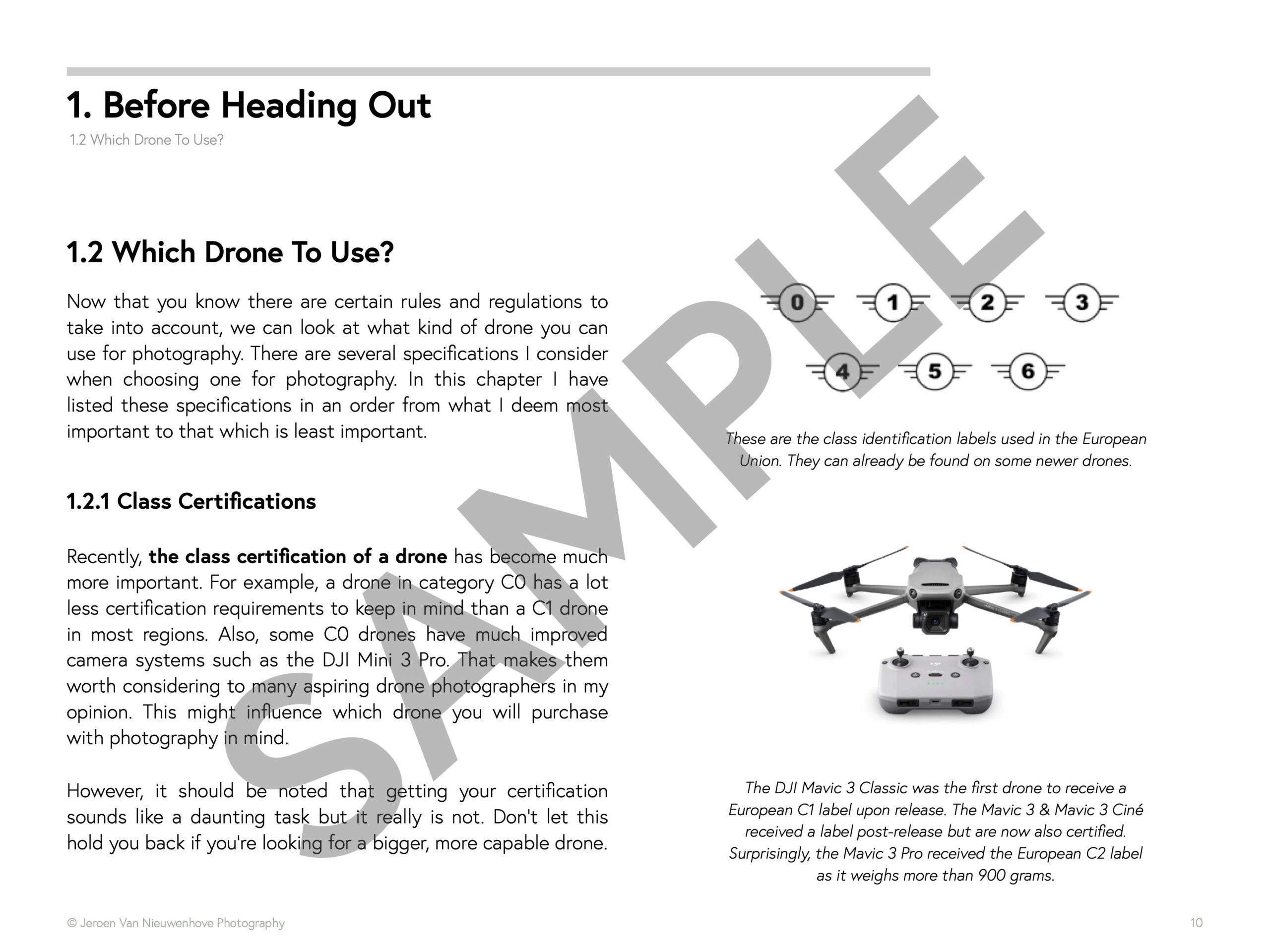

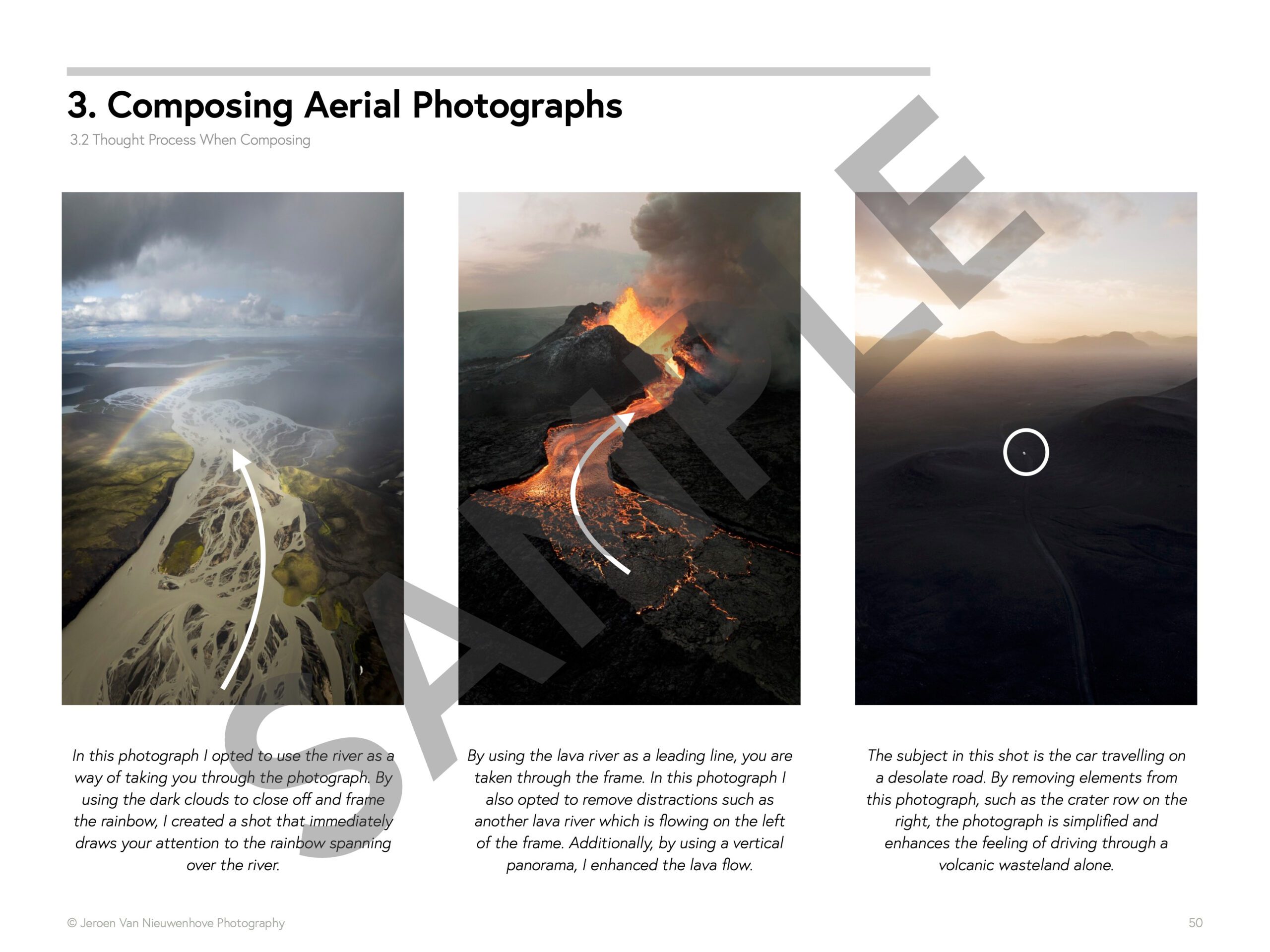



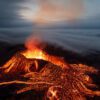
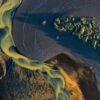


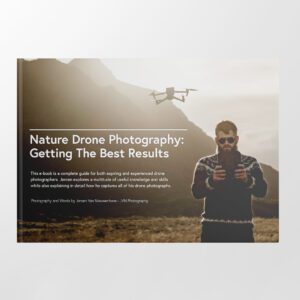

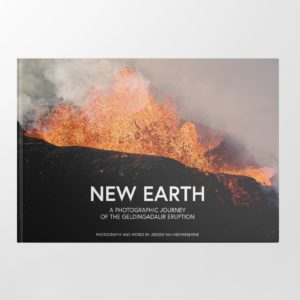
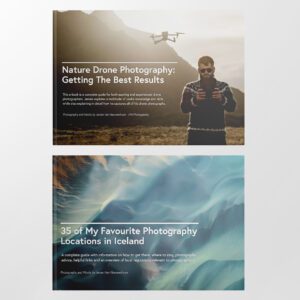


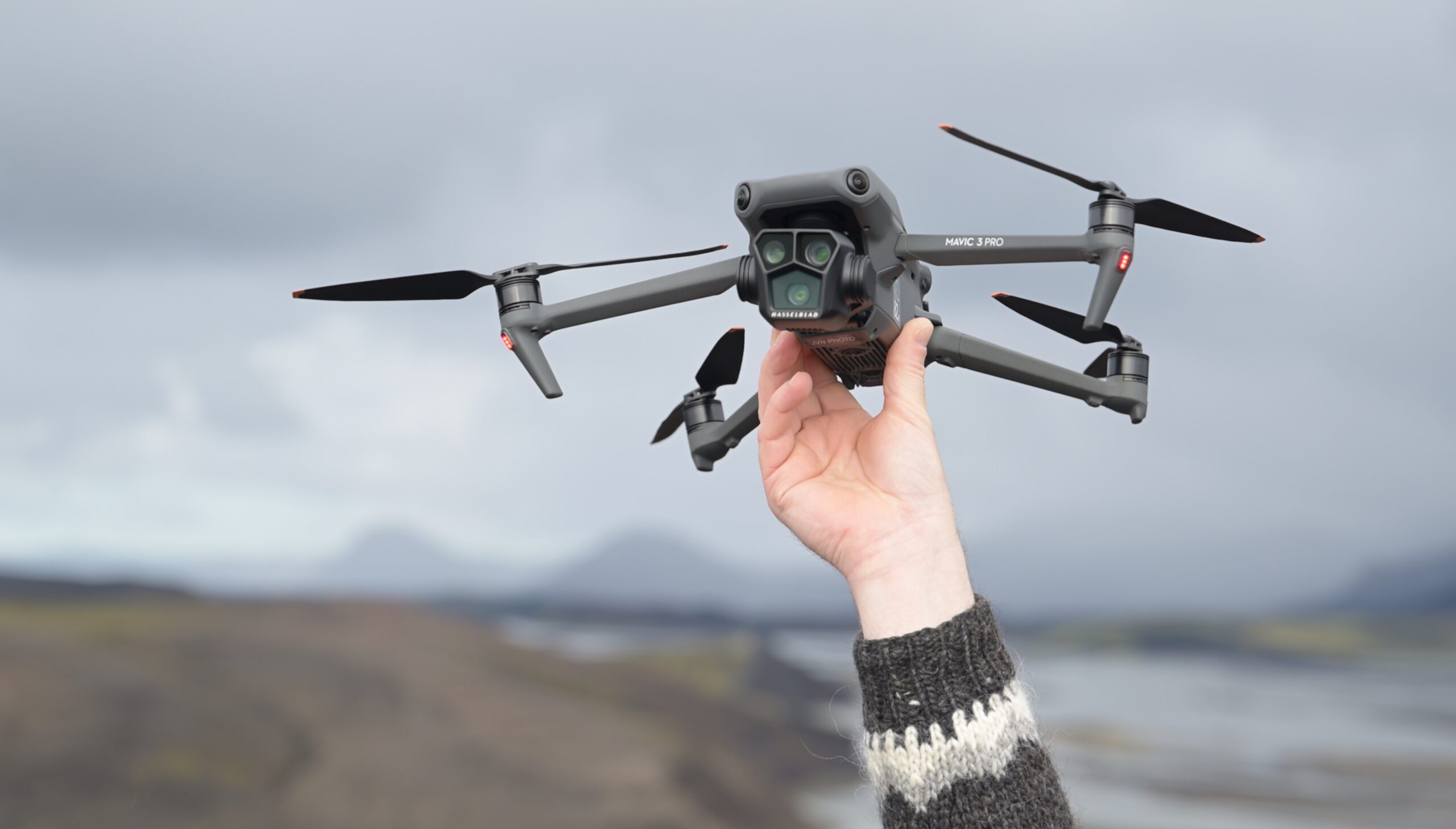
Hey Jeroen, thanks for a great article! So if I understood this right, if I am a registered drone operator in Denmark for example or any other EU state, that would be valid in Iceland as well, right? Or do we still need to register on flydrone.is?
Thanks and all the best! Alexandra
That is correct. If your license is valid in the EU, which it should be, than it is valid here in Iceland.
Hi Jeroen,
Hope u r doing good..I am from India and will be traveling to Iceland in the first week of December this year …..I hv DJI Mini 2drone …will I need to take permission…..if yes can u please guide me in this regard. My son is a nature photographer and loves to capture the beauty of Mother Nature in Iceland.
Thanks,
Pushpa
This is just the BEST post ever about recs and details about flying our drones, with al the necessary maps, links, info etc. Evermore I just discover that there is an aerial workshop of my dreamy goal.. the highlands with my drone! I just want to say THANK YOU!!!
Hi Alex, thanks for your kind words. I am glad to see you found the article helpful! I am running drone-focused photo workshops in the Highlands. Announcing new dates soon so make sure you are on my waitlist.
Thanks so much for such a useful post! One issue, the map at korstasjá(dot)ust(dot)is doesn’t seem to load any of the graphics, even when every category is selected on the legend. I’ve tried a few different browsers, and reached out to the help email address posted on the website. Is it just me?
That’s very odd. It is also not working for me. A real shame this because it was the only reliable map which showed all the different areas. Hopefully it’s just a bug.
Oh, you are kidding me! I was in Fjallbak / Landmannalaugar on June 14. So I could have flown my drone. Why oh why didn’t I re-read your blog before the trip!
Don’t sell yourself short… Those polar bears shots are really nice!
Hi Jeroen,
I am Mario from Belgium and i will be traveling to Iceland in july 2024.
I will take my DJi Mini 4Pro drone with me to try to create some fantastic video footage (not for commercial use). I have a drone licence (needed for my previous drone).
My question is, is there any kind of Drone Map like we have in Belgium (Map Droneguide).
Or can i trust the Fly/No fly zones from the DJI Fly app?
I also found a kind of map from Iceland with some zone’s marked in red and green. is this a map to be trusted?
Thanks in advance?
Mario Somers
Hi Mario, we don’t have an app like that here in Iceland but all locations with additional restrictions, other than the overall law, are mentioned in this article. There are no other local restrictions to think about.